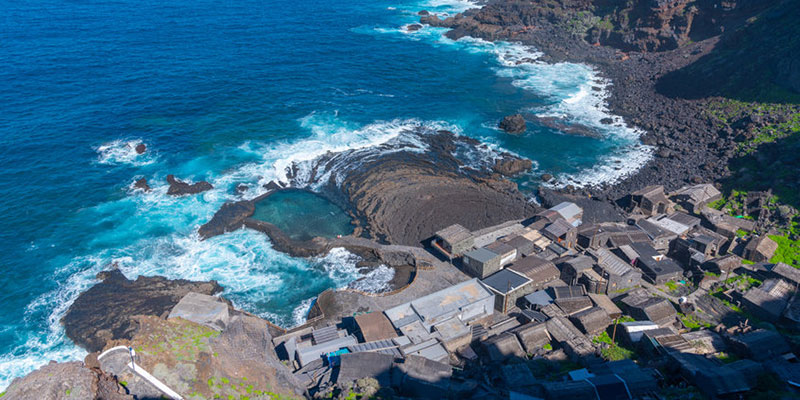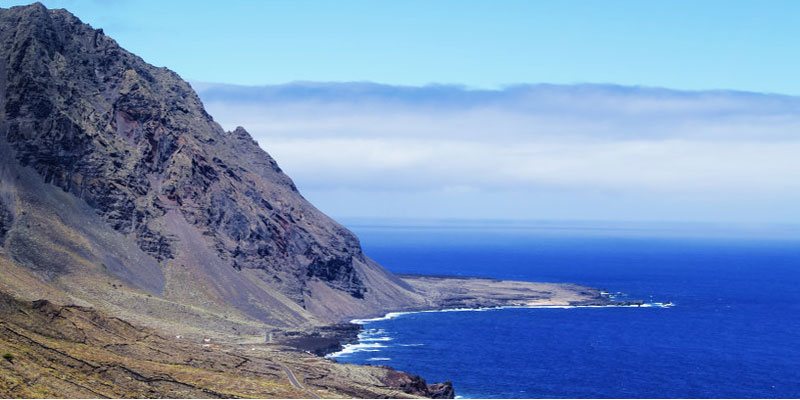Desalination plants provide 100% of the island’s drinking and irrigation water on the El Hierro in the Canary Islands.
Although desalination is commonly believed to be too expensive for agriculture, Spain is disproving the notion
Spain has made a success of desalination, even for agricultural irrigation, despite long-standing challenges that in some cases have made it too expensive for the application. As far back as 2012, approximately 22% of desalinated water in Spain was already used for agriculture. Claudio Klynhout, of the Spanish government’s AcuaMed agency, explained:
Here we encounter the paradox: because of the climate and the long hours of sun, there’s a great deal of tourism and very productive agriculture. And yet precisely because of the wonderful climate, there’s little water.
Spain’s long history of desalination started in the early 1960s, when many plants were built to supply drinking water, particularly in the arid Canary Islands, a Spanish archipelago off the coast of northwestern Africa.
It soon became clear that agriculture would need desalinated water at competitive prices, and desalination plants for irrigation proliferated in the Canary Islands in the 1980s. During a water shortage in the 1990s, the desalination movement spread to the Spanish mainland with the construction of more than 200 plants.
In 2004, Spain’s AGUA (Actions for Water Management and Use) program adopted a new water policy approach more in line with the European Union’s Water Framework Directive, in which desalination is a key pillar.
Today, Spain boasts more than half of the desalination capacity of Europe. It ranks fifth worldwide with 5.7% of the world’s present desalination capacity. Today, Spain is home to 99 large capacity plants (10,000-250,000 m³/day), 450 medium capacity plants (500-10,000 m³/day), and 216 small capacity plants (100-500 m³/day). With aquifers being rapidly depleted around the world, Spain’s experience with desalination for agriculture provides a valuable model for the rest of the world.
Pros and Cons
A Spanish research team defined some of the issues and key differences between desalination for different purposes.
Desalination for Industrial Applications
Lower quality and salinity requirements for some industrial uses mean lower desalination costs in terms of personnel, chemicals, and membranes. Savings are also achieved through electrical tariffs to produce water at lower energy cost, especially for brackish water plants with large storage ponds.
Desalination for Agriculture
Agricultural desalination produces a potentially inexhaustible water supply that is not dependent on precipitation. It can increase the productivity and quality of agricultural products, consume less surface and groundwater, and allow for the recovery of salty soils.
However, there are also challenges to using desalinated water for agriculture. When it comes to treating seawater, the cost of treatment could make it unsustainable for some crops, and it can be impractical to transport the treated seawater to inland areas.
While brackish aquifers may present a new source of water for irrigation, they can become depleted just like freshwater aquifers, and brine management for such inland operations is more difficult because there is no ocean outfall.
Another challenge is that desalinated water must be ionically balanced and substances such as boron must be removed because they’re toxic to plants. Spanish researchers, however, are studying the feasibility of placing reverse osmosis systems on farms to remove boron when desalinated water from coastal plants is above crop tolerances. Researchers have found the additional cost should decrease as capacity is scaled up.
 dudlajzov/123RF
dudlajzov/123RF El Hierro is striving to be an example to the rest of the world of how to use desalinated water for agricultural purposes.
Spanish Desalination Moving Forward
Officials on the Canary island of El Hierro hope to be a model for the future of island living, as well as an example to the rest of the world. Desalination plants provide 100% of the island’s drinking and irrigation water and are themselves powered by renewable energy, the result of the 100% renewable El Hierro Project.
While Spain has not built any large desalination plants recently, we’re seeing a growing number of smaller capacity plants, especially for agriculture use, similar to the way small-scale desalination plants have permeated the Chilean mining sector.
If you’re interested in compact, local desalination, Fluence provides modular NIROBOX™ seawater and brackish water desalination units that are already serving successfully on islands, in coastal regions, and in remote areas around the world. In addition to desalination, agriculture can gain water by treating wastewater and reusing it. In fact, Fluence’s Aspiral™ membrane aerated biofilm reactor (MABR) technology meets California’s strict Title 22 requirements for reuse. Contact our experts to learn how we can help with desalination or wastewater reuse opportunities in Spain and around the world.

